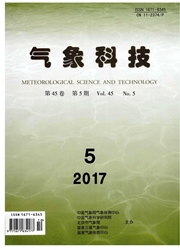

 中文摘要:
中文摘要:
利用川西南地区1960-2010年逐日降水资料,结合降水距平百分率干旱指标,基于Copula函数,构造川西南地区季节间连旱的危险度评估模型,对各站春夏连旱、夏秋连旱、秋冬连旱及冬春连旱的危险度特征进行分析.结果表明:Clayton Copula函数可用于季度间连旱模型的建立.通过各站的危险度评估模型得出,川西南地区遭遇春夏连旱的危险度最低,其中乐山市低至4.52%;而遭遇冬春连旱的危险度最高,攀枝花市高达28.99%.针对各站点而言,攀枝花市遭遇各种连旱的危险度最高,而乐山市遭遇各种连旱的危险度最低.对同一种连旱而言,各站遭遇不同强度连旱的危险度特征也有所差异.总体而言,当相邻季节均为重旱时,各站的连旱的危险度最小;当两季节均为偏旱强度时,各站的连旱的危险度最高.
 英文摘要:
英文摘要:
Based on the seasonal precipitation data from 1960 to 2010 in the southwestern ~lchuan, combining the percentages of precipitation anomaly, the Copula method is applied to construct the hazard evaluation model of continuous droughts between adjacent seasons for each weather station in the southwestern Sichuan. The results indicate that the Copula function can be applied to construct the hazard evaluation model of continuous droughts between adjacent quarters at each station in the southwestern Sichuan. It is concluded : (1) the hazard degree of spring and summer continuous droughts is the lowest in the southwestern Sichuan, as low as 4.52% in Leshan. (2) the hazard degree of winter and spring continuous droughts is the highest, high up to 28.99% in Panzhihua. (3) by contrast, the hazard degree of spring and summer continuous drought for Panzhihua is the highest, while the lowest in Leshan. For the same kind of continuous droughts, the risks for different stations are different. In general, when there are severe droughts in the adjacent seasons, the risk of continuous droughts is the lowest; when there are light droughts in the adjacent seasons, the risk of continuous drought was the highest.
 同期刊论文项目
同期刊论文项目
 同项目期刊论文
同项目期刊论文
 期刊信息
期刊信息
